

Taarika John’s craft is a blend of keen observation, personal narrative, and a deep love for storytelling. As an illustrator, she doesn’t just create visuals; she captures the essence of moments, moods, and the intricacies of human nature. Her journey from graphic design to freelancing as an illustrator has shaped her approach to art, making it more than just a profession—it’s a way of seeing and interpreting the world around her.
You transitioned from a career in advertising to freelancing in illustration. What motivated that shift, and how has it influenced your creative output?
When I began my undergraduate studies I was certain that I wanted to be a graphic designer because I enjoyed working with text and images. But studying graphic design made me question if I was on the right creative path - I really couldn’t see myself obsessing over kerning every day for the rest of my life. Eventually, I stumbled upon advertising; I found the storytelling aspect fascinating and dove into the subject head first. Working in advertising, however, wasn’t as creatively fulfilling as I hoped it would be.
At this point, I was stressed, confused, and on the verge of full-blown panic. I didn’t want to be a graphic designer, I didn’t like working in advertising, I had no idea what I really wanted to do and it felt like I was running out of time and options. Fortunately, my boss and mentor at the time pointed out that I was always trying to find a way to incorporate some form of drawing into everything I worked on. He also helped me realise that what I was really passionate about was storytelling and crafting narratives. He was the first person who helped me visualise what a career in illustration could look like.
Once I decided that I wanted to be an illustrator I realised that in some ways I would have to start from scratch. I needed to develop an illustration portfolio and improve my skills. Even though I’ve been drawing since I was a child I realised I had a long way to go before my work was at the level it needed to be. I studied the work of artists I admired, read a lot of books, and practised drawing every day. You have to make a lot of work before you start making work that you actually like. It took a while before I was able to actually get any illustration commissions and even longer before I was able to transition to full-time freelance illustration.
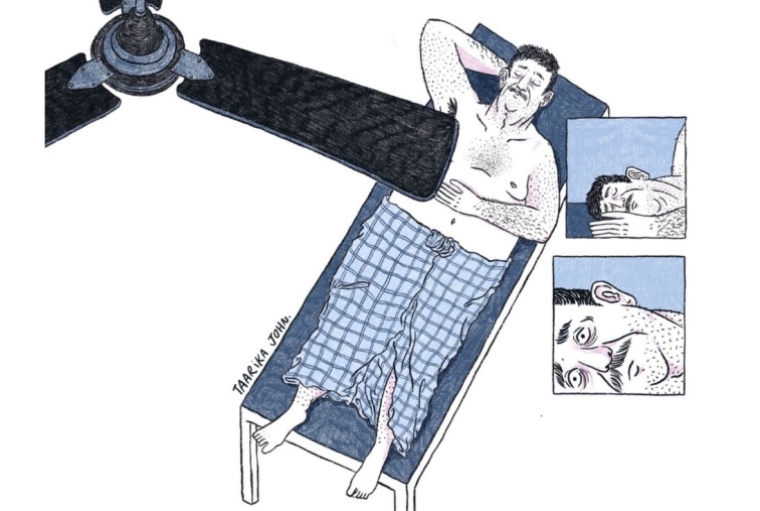
How does your observation-based approach shape your daily life as an artist?
I’ve been in the habit of observing people and eavesdropping on strangers for as long as I can remember so I suppose it was natural that it began bleeding into the work I make. However, it took me a while before I noticed the pattern and over the years I’ve learned to be more intentional and disciplined about how I approach my practice as well.
I have a collection of notebooks, many pocket-sized, and I attempt to carry one with me almost everywhere. Being able to jot down something I hear or make a quick sketch immediately makes it easier not to forget the little details. I have been keeping a diary since I was a child and it’s always been a great way for me to work out my thoughts and ideas and document the things I see, hear, feel, and experience. I have a couple of documents on the Notes app on my phone for the times I don’t have a notebook on me. I try to draw in places where I would be scrolling my phone instead like waiting rooms or when I’m on the train. I also try to take myself on little drawing dates with the sole intention of spending time drawing for fun.
Maintaining this sort of regular documentation practice - using sketchbooks, notes, and journaling - has helped me develop a sort of library or idea bank for myself that I can refer back to when I want to remember something specific or when I’m just looking for some inspiration.
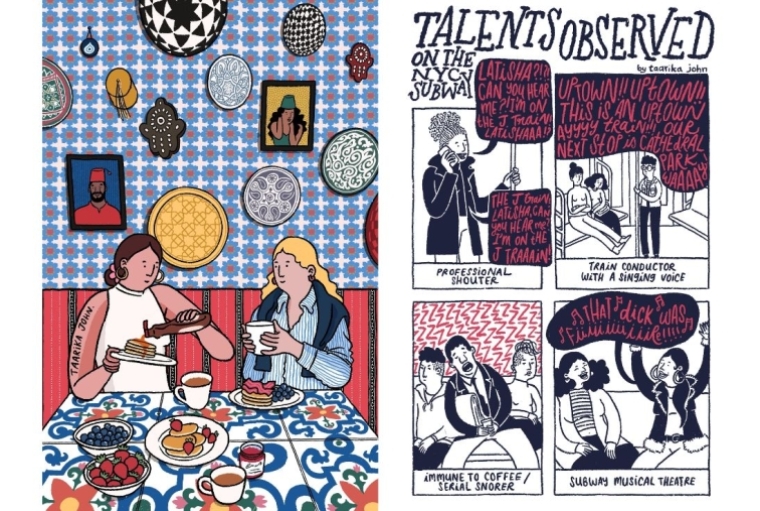
What challenges have you faced as an independent artist, and how have they shaped your artistic vision?
Working as an independent artist requires you to function like a one-person business. When I first started out I thought being a professional illustrator meant I would be drawing every day. In reality, drawing is just one small part of what I do. There’s a lot of time spent networking, learning new skills, cold-emailing potential clients, accounting, marketing, social media, and a range of other, often dull, tasks. You have to wear a lot of hats, shuffle between different tasks, be organised, and motivate yourself.
Dealing with the time in between projects is always a challenge. No matter how many slow patches I’ve gone through, it’s always a little terrifying waiting for the next project. Over the years I’ve learned to embrace the inevitable ups and downs of a creative career and try to use this time more constructively. It’s a chance to experiment with new techniques, work on portfolio pieces, reach out to new clients, and develop new skills. I also try to use this time to work on personal projects.
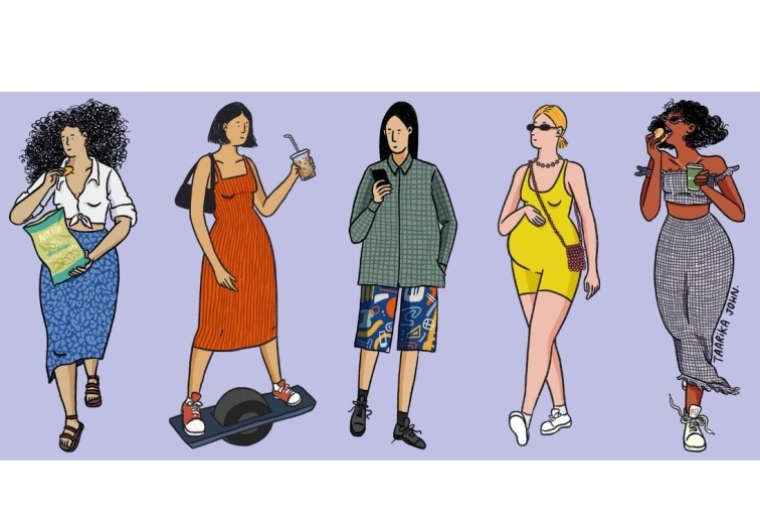
How has your perspective on art and observation changed since you began your journey? What lessons have you learned along the way?
When I first decided I wanted to work with narrative illustration, I thought things would get easier and I would have more clarity on exactly what I wanted to do. I thought the most important thing to do was develop my unique illustration “style” and spent many frustrating years before I realized that what I really needed to develop was my personal voice. In some ways, it’s a never-ending process. Your interests and tastes are going to keep changing; you have to give yourself room to change and grow creatively and allow those changes to reflect in your creative work as well.
The kind of illustration you enjoy looking at is not necessarily the kind of illustration work you actually like making. It takes time, trial, and error to figure out the difference and bridge the gap. When it comes to refining your craft, nothing can replace the benefits of practice. The more you practice the faster and more confident you become. Remain a student for life, you can never know too much. Discipline is underrated. Resilience is necessary. Pursuing a creative career is a marathon, not a sprint.
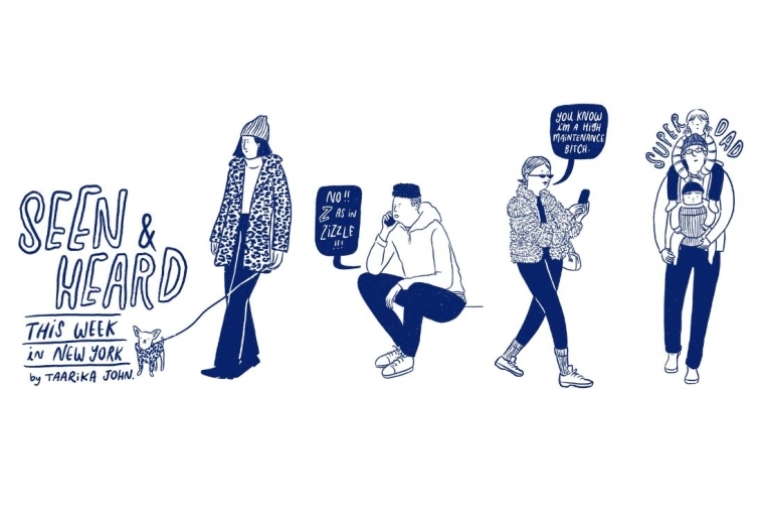
What advice would you give to young artists who want to capture the essence of their surroundings like you do? How can they develop their own unique voice?
The first step towards developing your personal voice is figuring out what you like and why you like it. Start paying attention to what catches your attention, what do you find yourself noticing? What feels vital to you to record and remember? Carry a notebook with you everywhere. Don’t be too precious with it. This isn’t a place for perfection or beauty, it's merely a tool to record things. Start a Pinterest board, save images on Instagram, take screenshots, and start collecting images that excite you.
Look beyond illustration and painting for inspiration. The books you read, the conversations you have, that reality show you love to hate-watch - everything you consume and experience. When you begin to practise collecting and documenting regularly you’ll start to see repeating themes. The more you identify your patterns of interest and notice what you feel compelled to document, the more you hone into your unique personal creative voice.
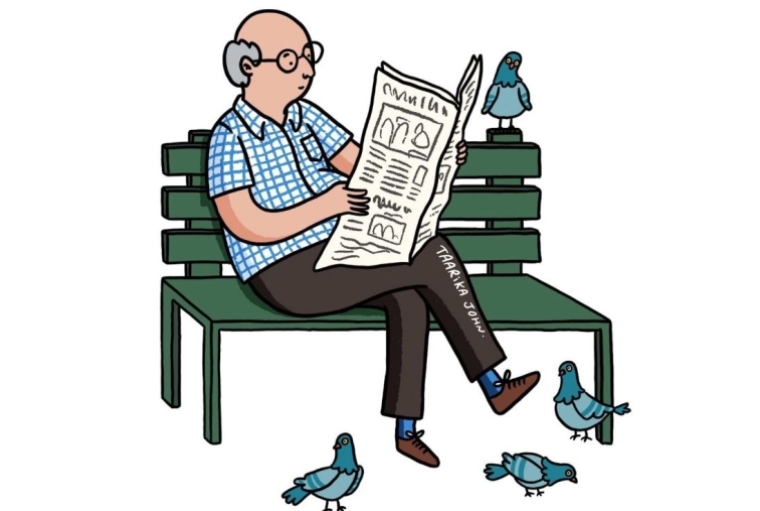
Can you share a memorable moment or character that particularly inspired one of your pieces?
When I lived in Bombay, my apartment building was located in a densely populated neighbourhood in Bandra. My bedroom window looked directly into my neighbour's living room with only a few feet of space separating us. As a freelance artist working from home, I spent most of my waking hours at the desk in my bedroom. Gradually I noticed that my portly, middle-aged nextdoor neighbour almost never left his living room. I referred to him fondly in my mind as Fat Uncle. No matter how early or how late, he was always there, fixed in front of the television and rarely moving. I was fascinated by this man and his rather odd and monotonous lifestyle. In the several years that I lived there, I made countless sketches and notes, observing and documenting his habits religiously to the point that my friends would tease me when they came over, wanting to know the latest development in my strange obsession. I wasn’t quite sure what I was going to do with all this material but I did know that I felt compelled to document it. Years later, after moving to New York, I wrote and illustrated a short novella featuring Fat Uncle himself as the protagonist. It’s one of my favourite projects, one I’m proud of, and a constant reminder that inspiration can be literally everywhere.
Words Paridhi Badgotri
Date 06.11.2024